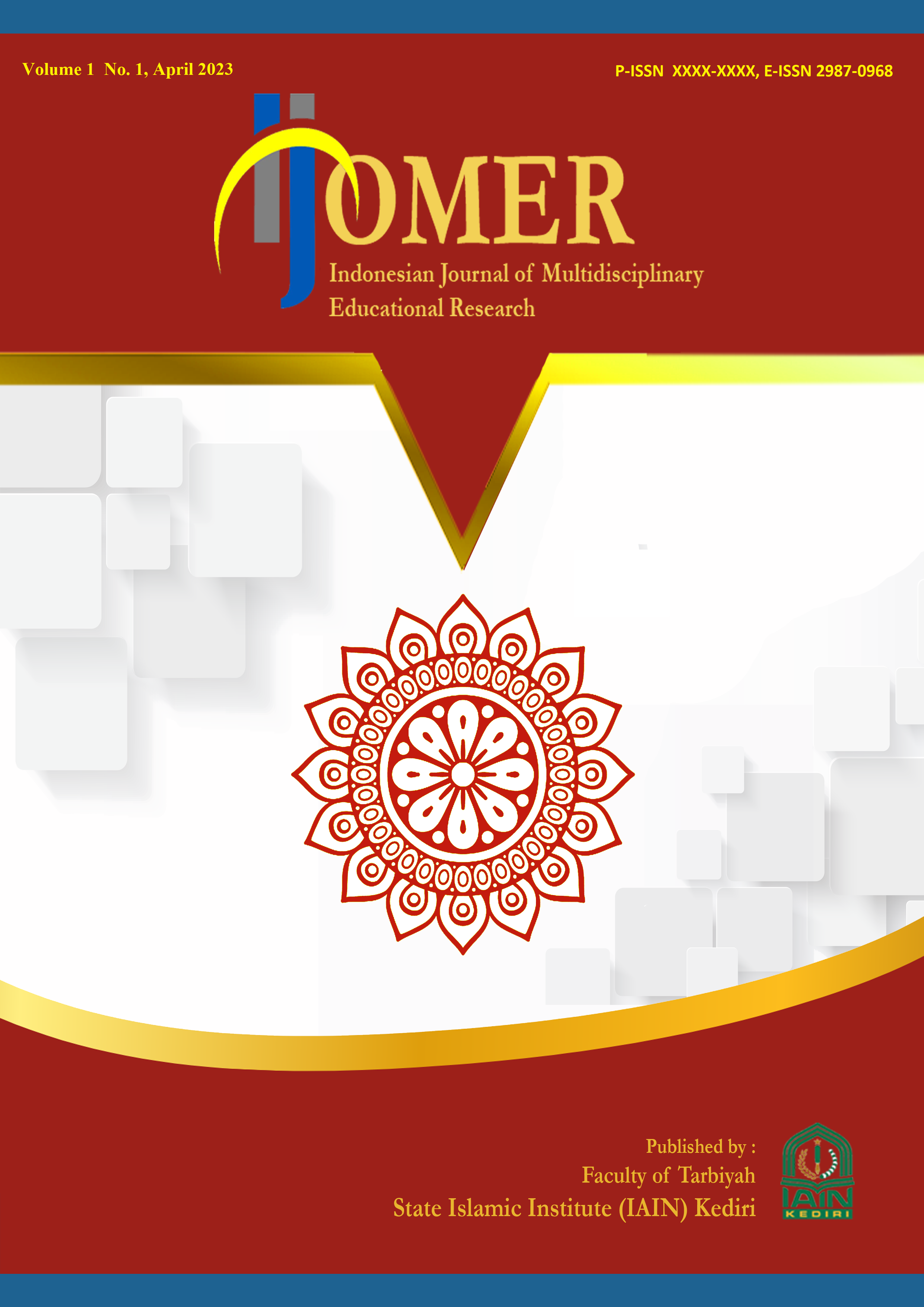The Believer in One Almighty God and Digital Technology: Case Study on Paguyuban Budaya Bangsa Pusat Kebumen
DOI:
https://doi.org/10.30762/ijomer.v2i2.3752Keywords:
believers in one almighty God, digital technology, Paguyuban Budaya Bangsa, guidanceAbstract
Digital technology has become a core part of daily life, impacting communication, work, and interaction. This shift poses challenges for maintaining spiritual values, especially as it affects how religious beliefs and practices are integrated into modern culture. This is a challenge for believers to be able to accept the development of digital technology by not changing the sacredness of the guidance. This research investigates how members of Paguyuban Budaya Bangsa (PBB), a belief organization in Wonokriyo Village in Kebumen, navigate these challenges, exploring the influence of digital technology on their spiritual teachings, their efforts to preserve traditional doctrines like "maca alam, maca kahanan," and the limitations they encounter in balancing tradition with modern advancements. This case study was conducted using a qualitative research method. Data collection techniques were carried out by interviewing organization administrators, elders, and the younger generation of Paguyuban Budaya Bangsa. The results showed that the guidance of believers in this group is related to the way their members interact with digital technology such as the meaning contained in the guidance of "maca alam, maca kahanan" where Paguyuban Budaya Bangsa uses computers to adapt to the times and the sustainability of the organization. In addition, the believers also use mobile phones as a tool of communication to interact with administrators and other members. The believers still maintain guidance in the use of digital technology, which reflects the balance between tradition and modernity.
Downloads
References
Adhitama, Satria. 2022. “IMPLEMENTASI AJARAN KEJAWEN OLEH PAGUYUBAN BUDAYA BANGSA.” 22.
Akhmadi, A. (2019). Navigating religious diversity and technology in Indonesia: Insights and challenges. European Journal of Theology and Philosophy, 3(1), 112–125.
Auna, HS et all. 2024. Ontology Design Of A Modern Learning Environment And Modern Pedagogy Using Protégé Software. IJOMER, 2(1), 47-66.
Budiartha, I. N. P. (2020). The legal pluralism in law education in Indonesia. Journal of Advanced Research in Law and Economics, 11(3), 1–5.
Dan Peri Agusti, Arifinsyah. 2019. “Aliran Parmalim Dalam Pandangan Majelis Ulama Indonesia Dan Persekutuan Gereja-Gereja Indonesia Wilayah Sumatera Utara.” Studia Sosia Religia 2(2). doi: 10.51900/ssr.v2i2.6484.
Hasyim, S. (2015). Majelis Ulama Indonesia and pluralism in Indonesia. Philosophy and Social Criticism, 41(4–5), 487–495.
Kaunang, H. P., Astuti, I. F., Rafsanjani, D. A. H., & Yulianti, Y. (2024). The dynamics of digital inclusion among indigenous religious communities in Indonesia. Universitas Gadjah Mada.
Kusuma, A. A., & Anggara, M. (2022). Digital media and indigenous spirituality in Indonesia: A bridge or barrier? Journal of Media and Culture Studies, 14(3), 178–195.
Kepercayaan, Subdit. 2016. Penelolaan Kepercayaan Terhadap Tuhan Yang Maha Esa.
Lestari, J. (2020). Religious Pluralism in Indonesia: Challenges and opportunities for national unity. Al-Adyan: Journal of Religious Studies, 1(1), 12–35.
Nandy. 2022. “Pengertian Media Sosial, Sejarah, Fungsi, Jenis, Manfaat, Dan Perkembangannya.” Retrieved (https://www.gramedia.com/literasi/pengertian-digital-marketing/#google_vignette).
Nuraliyah, Erni, Ahmad Fadilah, Elis Handayaningsih, Ernawati Ernawati, and Santi Librayanti Oktadriani. 2022. “Penggunaan Handphone Dan Dampaknya Bagi Aktivitas Belajar.” Ideas: Jurnal Pendidikan, Sosial, Dan Budaya 8(4):1585. doi: 10.32884/ideas.v8i4.961.
Nuriyah, ZC et all. 2023. Digital Technology Development in the Form of YouTube Videos as Science Learning Media in Ecosystem Material on Learning Motivation. IJOMER, 1(1), 14-28.
Rumadi, Sihombing, U. P., Yonesta, F., Trisasongko, D., A.M, F., Arianingtyas, R., & Putra, T. A. (2008). Menggugat BAKOR PAKEM: Kajian Hukum Terhadap Pengawasan Agama Dan Kepercayaan Di Indonesia. The Indonesian Legal Resource Center (ILRC).
Situmorang, Robinson, and Santi Maudiarti. 2020. “Apa Itu Komputer.” Course-Net 1–34.
Sulistyani, H. D., Rahardjo, T., & Rahmiaji, L. R. (2020). The social harmony of local religious groups. Informasi, 50(1), 85–96.
Surur, AM et all. 2024. Personalized Learning in a Digital Environment. IJOMER, 2(1), 79-99.
Suwartiningsih, D., & Samiyono, T. (2021). Interfaith collaboration and digitalization in rural Indonesia: A case study. Southeast Asian Journal of Community Development, 9(2), 54–68.
Tim Direktorat Kepercayaan terhadap Tuhan Yang Maha Esa dan Tradisi. 2017. Ensiklopedia Kepercayaan Terhadap Tuhan Yang Maha Esa. Jakarta.
Tjaroko, Adji. 2014. “Buku Jabaran Sesanti PBB.pdf.”
Downloads
Published
How to Cite
Issue
Section
License
Copyright (c) 2024 Fakultas Tarbiyah, Institut Agama Islam Negeri Kediri

This work is licensed under a Creative Commons Attribution-ShareAlike 4.0 International License.







